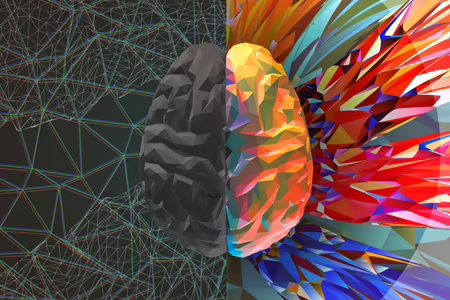Home Ketamine Therapy
The concept of Home Ketamine Therapy is an evolutionary leap forward in the broader healthcare paradigm, addressing conditions like depression, anxiety, and chronic pain. Traditionally, this therapy has been administered in highly controlled clinical settings, often through intravenous methods.
One of the most compelling advantages of our Home Therapy program is that it puts you, the patient, at the center of the experience. While you might imagine that home-based therapy would be less effective or carefully managed than in-clinic alternatives, we’ve worked diligently to ensure that the standard of care you receive in your home is every bit as rigorous and effective as what you’d find in a traditional healthcare facility. Our program incorporates comprehensive pre-treatment assessments, and specialized protocols to ensure that every session is as safe and productive as possible. Get A Free Assessment Today! Call 1-833-633-1576
Home Ketamine Therapy is available in all states highlighted in blue.

Home Ketamine Therapy is available in the following states.
Tennessee, Florida, Colorado, and the British Virgin Islands
Free Assessment
Get your free assessment today
Home Ketamine Therapy Facts
Can My Doctor Refer Me To Revitalist?
The Revitalist Provider Portal allows your doctor to easily, and with much attention to privacy, refer you for consultation. Should you receive treatment, we will communicate with your existing provider(s) regarding your care.
How Soon Will My Symptoms Improve?
More than 70% of patients with treatment-resistant depression (including bipolar patients) experience rapid relief after a low-dose infusion. Similar success rates have been seen in returning combat veterans suffering from PTSD.
Advantages of Home Ketamine Therapy
Home Therapy offers a plethora of advantages, many of which go beyond the sheer convenience of receiving treatment in the comfort of your home.
The Specific Benefits You Can Expect:
The setting in which you receive treatment can have a significant impact on its effectiveness. For many patients, the comfort and familiarity of their home environment can enhance relaxation, lower stress, and even improve the therapeutic outcomes of the treatment. With At Home Therapy, you can personalize your surroundings to fit your needs, whether that means dimming the lights, playing soothing music, or arranging a supportive environment with loved ones.
The Convenience Of Home Ketamine Therapy
The setting in which you receive treatment can have a significant impact on its effectiveness. For many patients, the comfort and familiarity of their home environment can enhance relaxation, lower stress, and even improve the therapeutic outcomes of the treatment. With Home Therapy, you can personalize your surroundings to fit your needs, whether that means dimming the lights, playing soothing music, or arranging a supportive environment with loved ones.
The Safety Of Home Ketamine Therapy
You might wonder if a home-based program could compromise safety. Rest assured, our Home Therapy is designed to uphold the same rigorous safety standards that we follow in our clinic. Our specialized telehealth system is in place to ensure your safety throughout the process.
What is Home Ketamine Therapy?
At-home therapy offers a convenient way for people to manage mental health conditions like depression, anxiety, and PTSD without visiting a clinic. Originally used in surgeries as an anesthetic, it is now recognized for its potential mental health benefits when prescribed carefully. Through telemedicine, patients connect with healthcare professionals online, discussing their symptoms and suitability for treatment. If approved, a prescription is provided, along with specific usage instructions to ensure safe and effective treatment. This approach saves time, reduces the need for regular clinic visits, and offers a comfortable, private setting for individuals to receive care. At-Home Therapy is designed to make mental health treatment more accessible and manageable for those who might otherwise face barriers to in-person care.
At-Home Therapy is especially helpful for people who have not gotten better with regular antidepressants. Studies have shown that it can work quickly and often helps people feel better faster than regular medications. Telemedicine is very important in this process because it allows doctors to check on patients from afar, making sure they are safe and that the treatment is working well. This kind of treatment has to follow rules and guidelines set by healthcare providers and the FDA. This means patients get safe, effective care that follows proper medical standards, even though they are at home. Because of these safety measures, At-Home Therapy have become a good option for people looking for new and easier ways to get fast acting help for their mental health.
Who is eligible for Home Ketamine Therapy?
This therapy is for people who have not had success with traditional antidepressants and still struggle with depression or anxiety. A doctor will decide if someone is eligible by doing an online consultation.
Eligibility for at-home therapy typically includes individuals who:
- Have been diagnosed with treatment-resistant depression, anxiety disorders, or PTSD: These conditions have shown responsiveness to this therapy, especially when traditional treatments have been ineffective.
- Are adults aged 18 or older: Most programs require participants to be legal adults.
- Do not have uncontrolled high blood pressure or significant cardiovascular issues: can elevate blood pressure, so stable cardiovascular health is essential.
- Are not pregnant or breastfeeding: The effects of on fetal and infant development are not well-studied, making its use during pregnancy or breastfeeding inadvisable.
- Do not have a history of substance abuse disorders: Due to potential for misuse, individuals with such histories may be excluded.
- Are not experiencing active psychosis or severe personality disorders: may exacerbate symptoms in these conditions.
- Have a stable home environment with support: A safe setting and access to support during sessions are crucial for at-home therapy.
- Are willing to engage in integration practices: Commitment to follow-up activities, such as therapy or coaching, enhances treatment effectiveness.
- Have access to necessary technology for telehealth consultations: Reliable internet and devices are needed for virtual assessments and monitoring.
- Reside in regions where at-home therapy is legally permitted: Legal status varies by location, so eligibility depends on local regulations.
These criteria are general guidelines; individual eligibility is determined through comprehensive assessments by our qualified healthcare providers.
How does Telemedicine play a role in At Home Therapy?
Telemedicine is very important for at-home fast acting therapy therapy. It allows patients to have consultations, be monitored, and get follow-up care without needing to go to a clinic in person.
How Does Home Ketamine Therapy Work?
At-Home Therapy follows a simple step-by-step process provided by Revitalist to make sure patients are safe and the treatment works well. Here is how At-Home Therapy works:
Step 1: Free Assessment
The first step is to schedule a free assessment with us. This helps the admissions team understand what the patient needs and figure out the next steps.
Step 2: Consultation and Onboarding
In this step, Revitalist looks at the patient’s medical history and current medications to see if this therapy is the right choice. The patient and healthcare provider then work together to decide on the best treatment plan.
Step 3: Starting Treatment
Once the patient is ready, they can start their therapy. The number of sessions may be different for each patient, depending on their treatment plan. We also encourages patients to take part in supportive therapy and wellness coaching during their treatment.
Step 4: Post-Care
After treatment, a wellness coach or therapist from our will help the patient learn from each session and use it in their daily life. Patients can also choose extra follow-up care to keep making progress. Doctors will keep an eye on the patient through online follow-up sessions to make sure they are safe and that the treatment is working well over time.
Benefits of At Home Therapy
Convenience and Comfort of At Home Therapy
At-home therapy is super convenient for patients. You can schedule treatment sessions easily and take your medication right at home without needing to go to a clinic. This is especially helpful for people who have trouble traveling, like those with mobility issues, chronic pain, or anxiety about being in public places. At-home therapy offers:
- Easy scheduling through our online system.
- A comfortable home environment that helps you relax.
- Personalized care that fits your needs.
Mental Health Conditions Treated by this innovative At-Home Therapy
This therapy has been shown to help many mental health conditions. Our team uses at-home therapy to treat depression, anxiety, PTSD, and other mood disorders. This type of treatment can work well for people who haven’t had success with other medicines. Getting mental health support at home can help patients feel more in control of their treatment and recovery because being in a familiar environment makes them feel more comfortable and at ease.
- Depression treatment from home that works when other medicines haven’t.
- Help for anxiety and PTSD without needing to leave home.
- More convenience and less disruption to your daily routine.
Personalized Therapy and Less Stigma
At-Home Therapy also offers a more personal experience. Since you get treatment at home, the therapy can be adjusted to fit your specific needs, which makes it more effective. Plus, at-home treatment helps reduce the stigma of going to a clinic for mental health care. You can feel more comfortable and less judged while getting the help you need because clinics can sometimes feel impersonal or carry a social stigma, which can make people hesitant to seek help.
- Telemedicine for this therapy allows for one-on-one care without the stress of going to a clinic.
- You can avoid stigma by getting treatment in the privacy of your home.
- Our team offers supportive coaching to help you every step of the way.
Common Concerns & Side Effects
At-Home Therapy can work really well for many people, but there are some concerns and side effects that you should know about. Here are the main points to consider:
What Are the Side Effects of this therapy
Some side effects of this therapy include feeling sick to your stomach (nausea), feeling dizzy, and feeling disconnected from your surroundings (dissociation). These side effects are usually mild and go away after a little while. Our team gives you detailed tips to help deal with any side effects that might happen.
How to Handle Side Effects at Home?
If you have side effects at home, it’s important to stay calm and follow the instructions your healthcare provider gave you. Make sure you have someone nearby who can help if needed, especially during your first few sessions. Our team is also available through telehealth to support you if you have any worries.
Is At-Home Therapy Safe?
When done with the help of our healthcare professionals, at-home therapy is generally safe. We keep an eye on patients through regular telehealth check-ins to make sure everything is going smoothly. We also follow strict medical rules to make sure everyone stays safe.
What should I do if I feel dizzy after the therapy?
If you feel dizzy, sit or lie down somewhere safe. Try not to get up quickly, and drink some water. Contact our team if the dizziness does not go away.
How do I manage dissociation during therapy?
Dissociation can make you feel like you are not connected to your surroundings. This is a common side effect, and staying calm is important. Take deep breaths and remind yourself that the feeling will pass. If it becomes too uncomfortable, contact us for help.
Can I be alone during my treatment?
We suggest having someone nearby during your first few sessions, in case you need help. Once you feel more comfortable with the treatment, it might be safe to continue on your own with support from our team.
Frequently Asked Questions
How Should I Get Ready for My First At-Home Session?
Before your first session, make sure you are in a quiet, comfortable space where you feel safe. This is important because a calm environment helps you relax and get the most out of the treatment. Keep a glass of water nearby, and consider having a trusted friend or family member stay with you. Try not to eat a heavy meal right before the session, as it could make you feel nauseous.
What Should I Do If I Feel Uncomfortable During a Session?
If you start feeling uneasy or overwhelmed, focus on taking slow, deep breaths to help calm yourself. It can also help to have something comforting nearby, like a soft blanket. If you continue feeling uncomfortable, reach out to your healthcare provider for immediate guidance.
How Can I Make My Environment Safe for At Home Therapy?
Make sure the room is free of clutter to avoid tripping hazards, and use comfortable furniture like a reclining chair or bed. Dim the lights to create a relaxing environment, and minimize distractions by turning off electronics or informing others in the household that you need privacy. Reducing distractions is crucial to help you stay focused and maximize the effectiveness of the therapy session.
How Long Should I Rest After My Session Before Doing Normal Activities?
After your session, it’s important to rest for at least 1-2 hours before returning to your normal activities. Since the therapy can affect your balance and perception, avoid driving, operating heavy machinery, or making important decisions until you feel fully back to normal.
What Should I Do If I Miss a Dose or a Scheduled Session?
If you miss a dose, do not take extra next time. Instead, contact your healthcare provider to reschedule. Missing one session usually won’t significantly impact your progress, but maintaining a consistent schedule is important for the best results.
How Do I Store the medication Safely at Home?
Store it in a cool, dry place away from direct sunlight. Always keep it out of reach of children and pets. If you have questions about proper storage, ask your healthcare provider for advice. Safe storage is crucial to avoid misuse or accidental ingestion by others.
What If I Don’t Feel Any Effect During or After the Treatment?
If you feel like the treatment isn’t working, Do Not Take more without consulting your healthcare provider first. Everyone responds differently, and it might take a few sessions to notice changes. Be patient your response to treatment can vary based on individual factors. Your provider may adjust the dosage or suggest alternative treatment options if needed.



